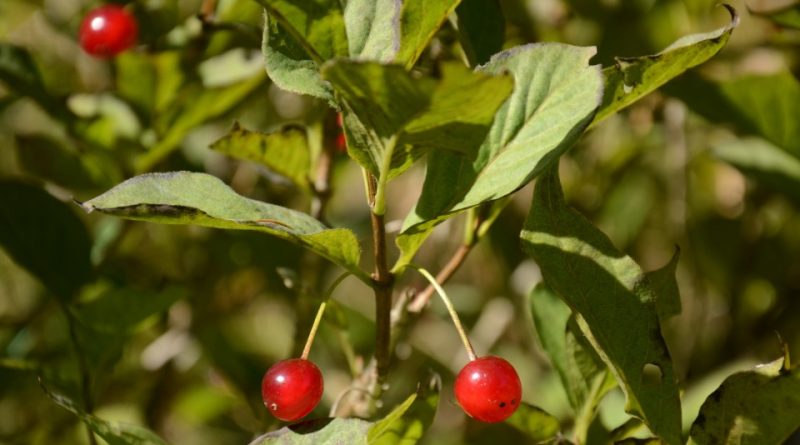Lonicera alpigena
Lonicera alpigena
The alpine honeysuckle (Lonicera alpigena L., 1753) is a shrub species of the Caprifoliaceae family.
Systematics –
From the systematic point of view it belongs to the Eukaryota Domain, United Plantae, Magnoliophyta Division, Magnoliopsida Class, Dipsacales Order, Caprifoliaceae Family and therefore to the Lonicera Genus and to the Alpigena L. Species.
Etymology –
The term Lonicera derives from Adam Lonitzer (1528-1586), a German doctor who wrote a famous text on medicinal plants.
The specific alpigena epithet comes from the Alps the mountain range of the Alps and from genus birth, origin, lineage, lineage: native of the Alps.
Geographical Distribution and Habitat –
The Alpine honeysuckle is a South European species (chains of southern Europe, from the Iberian Peninsula, the Alps, the Balkans and possibly the Caucasus or Anatolia) whose habitat is that which goes from the sub-mountainous horizon to the upper mountain (from 800 to 2100 m ), linked to pure and mixed beech-woods with conifers, mountain bush consortia and wet scrublands, on generally fertile soils and, preferably, of calcareous nature; semisciafila (or emistegifita).
It is present in all regions of Italy except in Puglia and the major islands.
Description –
The Lonicera alpigena is a deciduous shrub, which reaches heights from 0.50 to 2.50 m, rather branchy.
It has a deep and robust root system. The young branches are hairy-glandular, of a reddish-brown color, while the adult branches are ascending and slightly twisted, twigs of the year with two leaf stipules at the base.
The bark is light gray sand, desfogliantesi; the wood is not very resistant to cutting and with a smell of potato, ivory color; opposite gems, fusiform and pointed, with brownish scales.
The leaves are briefly petiolate, opposite and decussate, 5-10 (14) cm long and 3-5 cm broad, ovate-elliptic in shape, with an acute apex, with entire, wavy, finely ciliate, glabrous and shiny upper edge, opaque and sometimes hairy below, with marked veins.
The flowers are yellow with red shades, gathered in pairs on a single stem on peduncles (2-5 cm) glabrous at the axil of the leaves, often resting on the central vein of these, with small and ovary calyces almost completely grown, long corollas 12 -18 mm carmine red bilabiate; 5 violet stamens as long as the corollas. The anthesis is between May and July
The fruits are poisonous berries of bright red color, about 1 cm in diameter, melted in pairs on a single long stalk, called mountain cherries.
The seeds are small, flat, 3-4 per berry, ripening at the end of summer.
Cultivation –
The alpine honeysuckle likes sunny or partially shaded positions. Honeysuckle grown in pots must be watered abundantly during spring-summer, less in winter.
As for the substratum, it prefers fresh, well-drained and slightly clayey soils. It will also be good to add organic substance, especially when the climbing species are planted.
For the details of the cultivation technique the following sheet can be consulted.
Uses and Traditions –
The Lonicera alpigena can be confused with:
– Lonicera xylosteum L., resembling in appearance, which has very hairy leaves and twigs, velvety to the touch, larger yellowish-white flowers and slightly crushed red fruits of smaller dimensions, combined, but not completely grown;
– Lonicera nigra has the same posture and size, but has brown chapped bark with longitudinal lozenges, opposite leaves with a very short petiole (2-4 mm) decussate with a rounded lamina at the non-hairy apex, zygomorphic flowers paired on peduncles of 2-4 cm with pinkish-white corolla, almost black and pruinose 7-10 mm berries welded only to the base;
– Lonicera caerulea which is more rare, is found in the Alpine area, has desquamant reddish bark, opposite leaves elliptic-lanceolate sub-ductiles rarely more than 3 cm long, sparse attinomorphic flowers, greenish-yellow paired with fully grown ovaries, sepals and corollino tube hairy, pruinose ellipsoidal blue berry fruits, fused in pairs into one; Acidophilus.
The berries are toxic due to the presence of xilostein (emetic action), but once the plant was used for medicinal purposes.
Preparation Mode –
Even if the berries are poisonous, the bark can be used of the plant (antirheumatic, diuretic, antiedematous action), the leaves (anti-inflammatory, astringent, tonic, diuretic, detoxifying properties), the flowers (expectorant and nervine tonic properties), the fruits (diuretic and purgative action).
Guido Bissanti
Sources
– Acta Plantarum – Flora of the Italian Regions.
– Wikipedia, the free encyclopedia.
– Treben M., 2000. Health from the Pharmacy of the Lord, Advice and experiences with medicinal herbs, Ennsthaler Editore
– Pignatti S., 1982. Flora of Italy, Edagricole, Bologna.
– Conti F., Abbate G., Alessandrini A., Blasi C. (edited by), 2005. An annotated checklist of the Italian vascular flora, Palombi Editore.
Attention: Pharmaceutical applications and food uses are indicated for informational purposes only, do not in any way represent a medical prescription; therefore no responsibility is assumed for their use for curative, aesthetic or food purposes.


